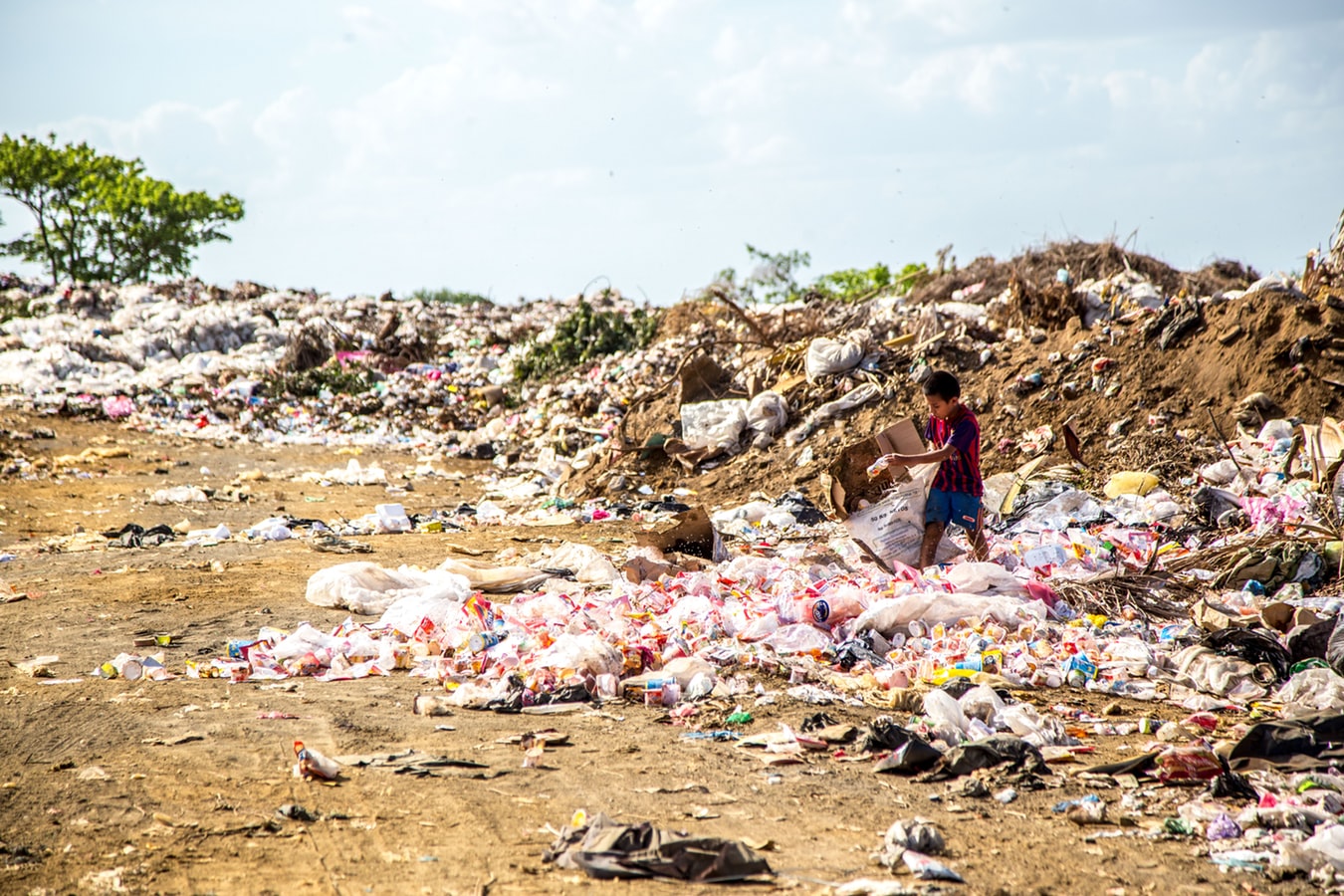Share
Recycling contamination is non-recyclable material or garbage that ends up in the recycling system. If your recycling bin is collecting specific items, such as beverage containers, then anything other than that specific material could be considered a contaminant. This means that even a piece of paper that was tossed into your plastics bin can contaminate the whole stream!
What are the main reasons for contamination?
- Leftover food waste or liquids in containers that spill or leak onto other items
- Hazardous and/or unwanted materials being thrown out such as needles, batteries, diapers, and paint
- Unclear bin labelling leaves users feeling confused about where their trash should go, so CleanRiver recently published an eBook on Recycling Graphics to help facilities keep their messaging clear
- Varied recycling practices among different cities and states. What one city accepts as recyclable can be considered a contaminant in another
- Items incorrectly tossed into recycling such as grocery store bags, straws, and coffee lids
Why is contamination an issue?
Items in the incorrect recycling stream move through the recycling system, contaminating or damaging the other perfectly good recyclable materials. This often happens when there is leftover food in containers that spill and transfer onto all the other recyclables.
So, the next time you are about to throw out your coffee cup, make sure that it’s completely empty so it won’t spill!

Even recyclables that contain food residue such as oil and grease can turn tonnes of perfectly good recyclables into garbage that just ends up in landfill. It can also significantly lower the value and make it more challenging to sell in order to offset the cost of recycling programs.
The paper, cardboard, plastic, and metal commodities in your recycling have value and can benefit your wallet by selling them off as recyclables. If contamination is present, then the quality of the recycled items is reduced or eliminated! But through effective recycling practices, recycling can become more possible and more profitable!
Contamination is also an issue because it can undermine all the effort and good habits of others. This means that even if 95% of the users are correctly tossing items into the bin, just one person incorrectly separating their waste will place the entire collection at risk of being non-viable and sent to landfill.
Most people want to do the right thing, but often end up mixing non-recyclables up in the wrong streams due to unclear messaging on the bins. CleanRiver recommends ensuring all bins have effective stream labelling and supporting graphics so people can have a clear understanding when tossing their trash.
**It is important to note that the only time that it is ok to mix recyclables (such as plastic and cardboard) is when you have first talked to your waste hauler or recycling service provider and they have told you that it is ok to do so!
So how can you help reduce recycling contamination?
- Think before you toss!
Ensure that the items you are tossing are being placed in the correct stream. If you are unsure about what can be recycled, then check out ecomaine’s Recyclopedia! Sometimes making the right decision is hard, so CleanRiver recently published an eBook on Recycling Graphics to help facilities keep their messaging clear and easy to understand. There are supplementary graphics that allow people to easily make the right choice when it comes to tossing their trash.

Sometimes making the right decision is hard, so CleanRiver recently published an eBook on Recycling Graphics to help facilities keep their messaging clear and easy to understand. There are supplementary graphics that allow people to easily make the right choice when it comes to tossing their trash. - Consider having restrictive openings on your bins to allow for further clarity for where people should toss their items.
Our recommended practice is to have a large square opening for trash, smaller circular opening for beverage containers, a thin rectangular opening for paper products. These restrictive openings drastically reduce the number of items that were accidentally thrown into the wrong stream! - Location of your bins!
Sometimes each type of collection bin is so spread out across a facility that people can’t find the bin they are looking for! This results in just tossing it into whatever bin is closest! CleanRiver recommends you to keep your bins together- by having trash, recycling, and other streams all beside each other will greatly diminish recycling contamination. CleanRiver offers bins that collect multiple streams in one bin- this not only helps people easily make the right recycling choices all in one place, but your custodial staff will also favor it too! - Clean your Containers!
Last of all, if you want to help reduce recycling contamination you can contribute by emptying and rinsing your containers of all possible contaminants– such as scrap pieces of food, oil, grease, or any liquids. We’re not talking about doing a thorough deep-cleaning of every recycled item- but just a simple rinse is sufficient for reducing the likelihood of contamination.By working together, we can support everyone’s recycling efforts and make the most out of each recycling program by doing our part to reduce recycling contamination!
For more ways to get involved with recycling, waste diversion, and waste reduction, check out our blogs:
- CleanRiver Q & A: What Is A Waste Diversion Rate And Why Is It Important?
- 6 Steps To Improve Your Waste Diversion Rate
- 3 Tips For Ordering The Most Effective Recycling Labels For Your Program
CleanRiver Recycling provides a variety of innovative, flexible and customizable recycling solutions. To determine the right solution to meet your needs, use the CleanRiver product selector.
If you have additional questions that weren’t answered in this blog post please call us at 1-866-479-4038 or email solutions@cleanriver.com.






